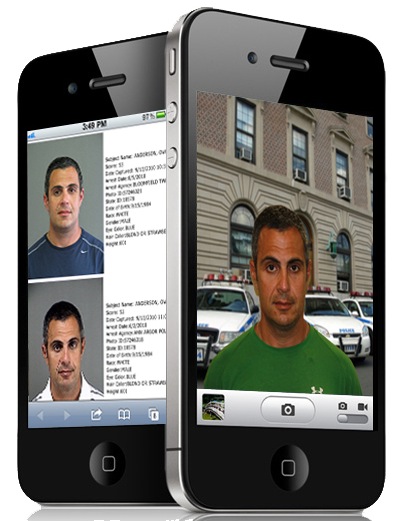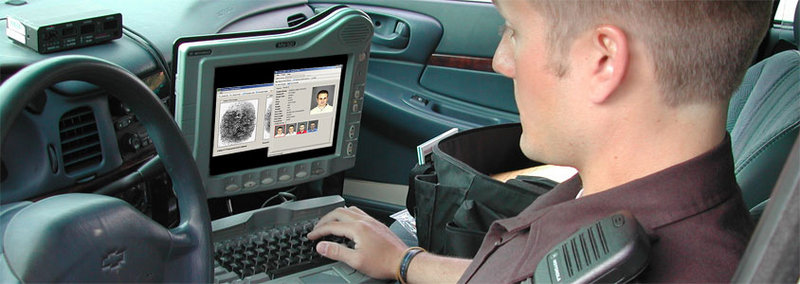Not everyone tells the truth when they talk to a sheriff’s deputy.
Some people even pretend to be someone they’re not, to avoid an arrest warrant or dodge a traffic ticket.
Now, the Cumberland County Sheriff’s Office has technology that will enable deputies to run quick checks to determine at least whether a person has ever been brought to the county jail.
Starting Monday, a deputy will be able to take a digital picture of someone and have a computer program compare it with a database of inmates’ photos, to determine whether there’s a match.
“We’re a huge database because everybody coming through the agency … their photo is in the system,” said Sheriff Kevin Joyce.
The facial recognition software will enable the sheriff’s office to easily use that vast database of images, and could hold promise for other police agencies.
“If we get a bank photo of somebody and we scan it and it’s a good enough quality picture, it’s going to give us leads of who it might be, and it’s at least a starting point,” Joyce said.
The county purchased the system for $35,000 from Dynamic Imaging Systems of Mount Laurel, N.J.
The computer maps the image of a person’s face and converts it to a numerical composite, using factors like the size of the eyes, their distance from each other and their proximity to the nose.
The system ignores qualities that are prone to change, like facial hair, glasses and hair color, as well as race and gender.
The system requires human analysis. A demonstration by the sheriff’s office showed that a picture of a white middle-age female inmate with dark brown hair returned not only her image, but also women with blond hair and some men, including a black man, as possible matches, because their facial proportions were similar.
The user’s request can include parameters such as men of a certain race, and within a certain height and weight range. The system generates a score showing how likely it is that two images match
A deputy will take a person’s picture with a smartphone or a digital camera, then email it to the county jail’s server. The system will return a list of possible matches, ranked in order of probability.
“My vision, in the long run, is to bring on other agencies in Cumberland County to allow them to do their own searching through our database once we work out the kinks,” Joyce said. There would be charge by the vendor for additional agencies.
The tool could be a welcome addition for other police agencies, said Robert Schwartz, executive director of the Maine Chiefs of Police Association.
“It’s the wave of the future,” he said. “Any tool you can get to help you with your job as a police officer, particularly in the identification (of suspects), is good.”
The technology is still evolving and depends on a high-quality image. Most surveillance video probably doesn’t generate clean enough images to yield good matches, though that technology also is improving.
The county plans to test a related system, in which a fingerprint reader that plugs into a laptop computer can be used to positively identify someone if their prints are on file with the county.
Capt. Craig Smith, head of investigations, noted that fingerprints are more precise and reliable for identification, but someone can refuse to have their fingerprints taken.
“You can just stand a few feet from them and take a picture,” Smith said. “Particularly if they’re not being cooperative, it’s probably a little easier to get” a photo than a fingerprint.
There are implications for repeat offenders. The more times a person has been arrested and photographed at the jail, the more reliable a comparison will be.
The county’s interest in the technology originated with an incident at the jail in 2009, when the wrong person — a maximum-security inmate — was released on bail.
That man and the one who was supposed to be released had similar names. The man who was released didn’t let the jail’s staff know his true identity. He later turned himself in and faced additional charges for the deception.
The facial recognition software should help prevent such problems, as will other safeguards that were established afterward, officials said.
Owen Friedrich, product manager with Dynamic Imaging Systems, said the technology takes advantage of one of the strengths of county jails — they have contact with many defendants. The Cumberland County Jail handles about 10,000 bookings a year.
Even a picture several years old can yield a match, Friedrich said.
Although facial recognition software has been available for years, the cost has come down so it is more affordable for law enforcement, he said.
Some feel the technology poses civil-liberty concerns.
“This technology is still in its infancy and at the current point it’s notoriously unreliable,” said Zachary Heiden, legal director for the American Civil Liberties Union of Maine. “As a result, the ACLU has objected to the use and expanded use of facial recognition technology in the public sphere.”
“When people are constantly under surveillance, it treats them as if they may have done something wrong,” he said.
Schwartz, with the Maine Chiefs of Police, said the tool must be used judiciously.
“(Officers) would have to be pretty sure before they made a decision based solely on that photo,” he said.
Staff Writer David Hench can be contacted at 791-6327 or at:
dhench@pressherald.com
Send questions/comments to the editors.




Success. Please wait for the page to reload. If the page does not reload within 5 seconds, please refresh the page.
Enter your email and password to access comments.
Hi, to comment on stories you must . This profile is in addition to your subscription and website login.
Already have a commenting profile? .
Invalid username/password.
Please check your email to confirm and complete your registration.
Only subscribers are eligible to post comments. Please subscribe or login first for digital access. Here’s why.
Use the form below to reset your password. When you've submitted your account email, we will send an email with a reset code.